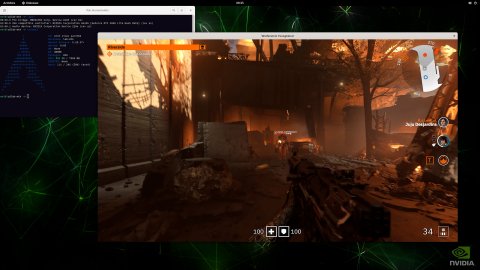
To demonstrate that advanced graphics can be applied to a wider and more efficient series of devices, Nvidia has published some demos that demonstrate how it is possible to have this kind of graphics on Arm-based systems.
To show this, Nvidia used Wolfenstein: Youngblood. In the domes you can see real-time ray-traced reflections and DLSS, for the first time ever, on a platform based on Arm architecture. Additionally, NVIDIA showed The Bistro demo running with real-time ray tracing on the Arm, with RTX Direct Illumination (RTXDI) and NVIDIA Optix AI-Acceleration Denoiser (NRD) enabled.
The demos are running in real time on a MediaTek Kompanio 1200 platform based on Arm architecture, combined with a GeForce RTX 3060 GPU. The realization of the two demos is the result of NVIDIA's commitment to bring different SDKs RTX to work on Arm devices, including:
Deep Learning Super Sampling (DLSS), which uses AI to boost frame rates and generate beautiful, sharp images for video games. RTX Direct Illumination (RTXDI), which allows developers to add dynamic lighting to their gaming environments. NVIDIA Optix AI-Acceleration Denoiser (NRD), which uses AI to quickly reduce overall noise in an image or rendering. The RTX Memory Utility (RTXMU), which optimizes the processes used by applications for graphics memory. RTX Global Illumination (RTXGI), which helps recreate real-world light reflections in environments. The RTXDI, NRD and RTXMU software development kits for Arm, along with Linux and Chromium, are available starting now. RTXGI and DLSS will arrive soon.
This is sort of a response, albeit an indirect one, to what AMD is doing with its FSR. Not being able to count on an open source technology like the competition, Nvidia aims to expand the number of partnerships designed to increase the spread of RTX technologies on the market.
Have you noticed any errors?